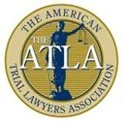How to Prove the Other Driver Was Sleeping At the Wheel
Key Points:
- Drowsy Driving or falling asleep at the wheel can happen at any time of the day or night
- The impacts of drowsy driving accidents are similar to those associated with other kinds of impairments like drugs and alcohol and can be just as devastating
- To prove a driver was asleep at the wheel or impaired by drowsiness can be extremely difficult and requires solid evidence and careful presentation
- In addition to accident reports and medical evidence, the testimony of expert witnesses may be required to prove sleep-impairment
- Being awarded punitive damages related to sleep-impairment is possible, but difficult and rare even for legal professionals
Table of Contents
The highways of Georgia are busy, fast-paced places with thousands of risks. In just driving to work you may be taking your life in your hands. More to the point, you are often placing your life in the hands of others who might be under the influence of drugs, alcohol, road rage, or simple inexperience. One of the often forgotten highway risks is the very real risk of encountering the drowsy driver.
Unfortunately, pinpointing the exact number of accidents in Georgia involving drowsy or sleeping drivers is difficult. Drowsy driving is often underreported, as attributing an accident solely to fatigue can be challenging. However, we can paint a picture of its prevalence through both national and state sources:
- The National Highway Traffic Safety Administration (NHTSA) estimates that drowsy driving causes around 100,000 crashes annually, resulting in 1,550 fatalities and 71,000 injuries.
- Studies suggest that drowsy driving might be a factor in up to 9.5% of all crashes nation-wide.
Georgia-specific data:
- While Georgia doesn't explicitly track drowsy driving accidents, it ranks 5th in the nation for most dangerous states for drowsy drivers according to a study by the Law Offices of Gary Martin Hays & Associates
- This suggests that drowsy driving is a significant concern in Georgia.
The Centers for Disease Control estimates that 1 in 25 adults has fallen asleep at the wheel at some point which is alarming considering that drowsy driving can be as impairing as driving drunk, affecting reaction times, concentration, and awareness.
While the exact number of drowsy driving accidents in Georgia is elusive, the available data paints a concerning picture. The national statistics, Georgia's ranking, and individual risk factors all point towards drowsy driving being a frequent and serious threat on the state's roads.
Drowsy driving accidents can happen any time of the day or night, however, they are most common during two main time periods:
- Late night (midnight to 6 a.m.): This is the time when our natural sleepiness peaks, due to our circadian rhythm. Additionally, many people are driving home from work or social events during this time, which can further increase fatigue.
- Mid-afternoon (3 p.m. to 5 p.m.): This is another time when people naturally experience a dip in alertness, known as the post-lunch dip. Additionally, factors like long commutes and hot weather can contribute to drowsiness during this time period which also happens to coincide with rush-hour traffic making it a perfect storm of driving danger
Other Factors That Can Contribute to Drowsy Driving
- Shift work: People who work irregular hours are more likely to be drowsy while driving.
- Long commutes: The longer you drive, the more likely you are to become tired.
- Medications: Some medications can cause drowsiness as a side effect.
- Alcohol and drug use: These substances can further impair your alertness and judgment.
- Medical conditions: Certain medical conditions, such as sleep apnea, can make you more susceptible to drowsiness. It is estimated that as 25 per cent of adults have sleep apnea and 80 to 90 percent of these cases remain undiagnosed and untreated. (This means that one in every four trucks you encounter on the road could be driven by a sleepy, impaired driver.)
The Types of Accidents that Happen When Drivers Fall Asleep
The effects of drowsy driving can be very similar to those of alcohol or drug impairment. Both can slow reaction times, and impair judgment and coordination increasing the risk of accidents and resulting injuries.
Drowsy driving and sleeping at the wheel can lead to a variety of car accidents, ranging from minor fender benders to catastrophic multi-vehicle collisions. Here are some of the most common types:
- Rear-end collisions: When a drowsy driver fails to react quickly enough to the car in front stopping, they can rear-end it. This is a common type of accident, especially in stop-and-go traffic.
- Head-on collisions: If a driver drifts into the oncoming lane due to drowsiness, they risk a head-on collision with another vehicle. These are often the most serious type of accident, as they involve high speeds and direct impact.
- Single-vehicle crashes: Drowsy drivers may drift off the road entirely, hitting curbs, guardrails, trees, or other objects. These accidents can vary in severity depending on the speed and the object being hit.
- Rollovers: If a drowsy driver makes a sudden, jerky steering correction, they can lose control of the vehicle and cause it to roll over. Rollovers are particularly dangerous and can lead to serious injuries or death.
- Pedestrian and cyclist accidents: Unfortunately, drowsy drivers can also pose a threat to pedestrians and cyclists. If they fail to see someone crossing the road or riding in a bike lane, they can cause serious injuries or death. They can also sometime veer off the roadway and crash into even victims on the sidewalk.
The severity of accidents caused by drowsy driving depends on various factors, such as the speed of the vehicles involved, the type of collision, and whether the occupants were wearing seatbelts. However, even seemingly minor accidents can result in injuries, such as whiplash, broken bones, and concussions.
Is Sleeping While Driving, Against the Law in Georgia?
While Georgia doesn't have a specific law against drowsy driving, law enforcement officers can still cite drivers for impaired driving if they believe fatigue is impacting their ability to operate a vehicle safely. This can be based on observations of erratic driving behavior
Georgia Works to Curb Drowsy Driving Accidents
Although Georgia lacks specific laws against drowsy driving, it does take some steps to curb its prevalence and raise awareness about the dangers it poses. Ultimately, a multi-pronged approach that combines awareness campaigns, education, enforcement, and research is essential to effectively combat drowsy driving in Georgia and make its roads safer for everyone.
State authorities work to bring attention to the problem of drowsy driving by emphasizing the dangers through awareness campaigns, driver education, law enforcement, research and data collection and focusing more on commercial drivers.
For example, Georgia has stricter regulations for commercial drivers, including longer mandatory rest periods and limits on driving hours. This is because commercial drivers are often at increased risk of fatigue due to long hours on the road and demanding schedules.
Despite these efforts, drowsy driving remains a significant problem in Georgia. To further reduce its impact, some advocates are calling for the state to implement a primary enforcement law for drowsy driving. This would allow law enforcement officers to pull over and cite drivers suspected of being drowsy, even if they haven't committed another traffic violation.
Sleeping Drivers and Drowsy Drivers – Is There a Legal Difference?
While Georgia lacks a specific law against sleeping at the wheel, the broader framework of impaired driving laws and civil liability allows for addressing the dangers of drowsy driving. Whether the driver was fully asleep or just experiencing drowsiness, the key factor is proving their level of impairment and how it contributed to the accident.
- Impaired Driving Laws - Georgia's impaired driving laws cover various levels of impairment, including those caused by fatigue. Law enforcement can cite drivers exhibiting signs of drowsiness that impact their ability to operate a vehicle safely. These signs could include erratic driving, weaving, slow reaction times, or failing to maintain a consistent speed.
- Civil Liability - If drowsiness can be demonstrated to have played a role in an accident, the driver can be held liable for damages through civil lawsuits. Evidence like sleep apnea diagnosis, witness testimonies, expert analysis of accident data and driver behavior, and even pre-accident phone records showing the driver was awake late or discussing fatigue can strengthen such claims.
- Commercial Driver Regulations - Georgia implements stricter regulations for commercial drivers regarding rest periods and driving hours. This focuses on preventing fatigue-related accidents involving larger vehicles carrying significant risks. Truck drivers exceeding these regulations without justification could be cited for reckless driving.
- Focus on Evidence and Expert Testimony - In all cases where drowsiness is suspected, the focus shifts to the level of impairment and its impact on the driver's ability to operate the vehicle safely. This relies heavily on evidence, witness statements, and potentially, expert testimony from sleep specialists or accident reconstruction professionals.
Negligent Driving Behaviors Common to Drowsy Drivers
It's important to note that not all of the behaviors listed below are definitive indicators of drowsy driving. Some individual experiences and medical conditions can mimic certain symptoms. However, a combination of these signs, especially when coupled with witness testimonies, accident data, and potential evidence of pre-existing sleep disorders, could be used to build a strong case for drowsy driving as a contributing factor to an accident.
- Erratic lane changes: Weaving between lanes, drifting in and out of the marked lanes, or crossing lane dividers without proper signaling.
- Slow reaction times: Delayed responses to traffic signals, brake lights, or obstacles, indicating impaired awareness and processing speed.
- Inconsistent speed: Maintaining an unusually slow or fluctuating speed due to loss of focus and alertness.
- Frequent yawning or nodding off: Visible signs of tiredness, such as excessive awning or brief moments of losing consciousness, posing an immediate danger.
- Distracted driving: Engaging in activities like eating, using a phone, or adjusting the radio while drowsy, further diverting attention from the road.
In the moments after the accident, the drowsy drive might exhibit the following behaviors, which could indicate his level of impairment:
- Confusion or disorientation: Appearing dazed, confused, or lacking clear recollection of the accident, suggesting potential sleepiness at the time.
- Admitting fatigue: In some cases, drivers might openly admit to feeling tired or sleepy just before the accident, strengthening evidence of drowsy driving.
It's important to note that these behaviors are not definitive indicators of drowsy driving. Some individual experiences and medical conditions can mimic certain symptoms. However, a combination of these signs, especially when coupled with witness testimonies, accident data, and potential evidence of pre-existing sleep disorders, can build a strong case for drowsy driving as a contributing factor to an accident.
What Challenges Come With Proving Legal Claims against Sleepy Drivers
Unfortunately, proving conclusively that a driver was asleep at the wheel in an accident can be challenging. However, various types of evidence can be gathered in order to help build a strong case suggesting drowsiness or sleep as a contributing factor:
Evidence gathered following the accident and in the immediate aftermath by responding officers that becomes part of the official report is extremely valuable. Officers will make note of the following details:
- Lack of skid marks: In some cases, a drowsy driver might not react at all before impact, leaving no skid marks, unlike a driver trying to avoid a collision.
- Vehicle damage: The pattern of vehicle damage can sometimes point towards drowsy driving, for example, damage focused on one side of the vehicle indicating drifting before impact.
- Injuries: Certain injuries, particularly head and neck traumas, might be more consistent with the driver falling asleep and hitting the steering wheel or dashboard involuntarily.
- Positive drug/alcohol tests: Drug screens and toxicology reports done on the drivers are valuable. While negative results wouldn't rule out drowsiness, positive tests for medications or alcohol with drowsiness side-effects could strengthen the case
- Event Data Recorders (EDRs): Modern cars often have EDRs that record information like speed, steering angle, and braking data just before a crash. This vehicle data can sometimes reveal erratic driving patterns indicative of drowsiness.
- Observations of the driver before the accident: Witnesses may have seen the driver nodding off, swerving, or exhibiting other signs of fatigue in the moments leading up to the crash.
- Post-accident observations: Witnesses might notice the driver appearing disoriented, confused, or excessively tired after the accident, suggesting lack of sleep.
Evidence like that listed above can be especially useful in evaluations done later by expert witnesses.
- Accident reconstruction experts: Their analysis of the crash scene and vehicle damage can sometimes point towards drowsy driving as a likely cause.
- Medical professionals: Doctors can be used to testify about the driver’s medical history and medications and how those things might impact his/her driving behavior.
- Sleep experts: They can analyze the driver's sleep patterns (if available), medical history, and medications to assess whether fatigue was a contributing factor.
Other evidence:
- Driver's schedule: Evidence showing the driver had recently worked long hours, stayed up late, or had a disrupted sleep schedule can support the drowsiness claim. In cases where commercial drivers are involved, the driver’s log books are also critically important.
- Electronic records: Phone records or messages indicating the driver was awake late or discussing fatigue around the accident time can be relevant. Commercial vehicles are often equipped with electronic monitoring devices which can give a clear picture of the driver’s activity in the hours and moments before the accident.
Remember, building a case for drowsy driving relies on circumstantial evidence and expert interpretation. This interpretation may include the observations of responding law enforcement officers.
While no single piece of evidence is conclusive, a strong combination of factors can build a convincing argument to support the claim.
The Benefits to Proving the Driver Was Asleep
Proving the other driver was asleep at the wheel in an accident can potentially increase your compensation in an insurance claim in several ways:
It Creates Stronger Liability Case:
- Increased liability percentage: Establishing the other driver was solely responsible for the accident through evidence like sleep apnea diagnosis, witness testimonies, and expert analysis, strengthens your claim for maximum compensation. This shifts the liability burden entirely to the at-fault driver's insurance.
- Reduced Shared Fault: In states like Georgia, where fault can be divided between drivers, proving that the other driver’s sleep-related behavior caused the accident can lessen any blame placed on you, potentially increasing the portion of damages you are awarded.
It Makes Possible a Higher Damages Claim:
- Emotional distress: The trauma and emotional impact of being involved in an accident caused by a sleeping driver can be significant. Evidence of sleep-induced recklessness can strengthen your claim for compensation for emotional distress and mental anguish.
- Punitive damages: In some cases, depending on the severity of the accident and evidence of deliberate disregard for safety due to sleep deprivation, courts might award punitive damages against the at-fault driver, which you could potentially recover from their insurance.
It Increases Negotiation Leverage:
- Strengthened bargaining position: Demonstrating a strong case with conclusive evidence of the other driver's fault gives you more leverage when negotiating with their insurance company. This can lead to a more favorable settlement offer covering your expenses and damages.
- Reduced litigation risk: A clear case supported by compelling evidence can discourage the at-fault driver's insurance company from contesting liability or attempting to reduce your compensation. This can decrease the likelihood of a lengthy and costly legal battle.
It's crucial to note that the specific impact of proving the other driver was asleep on your compensation will depend on various factors:
- Strength of evidence: The overall quality, admissibility, and persuasiveness of your evidence significantly influence the outcome.
- Severity of injuries and damages: The extent of your physical, emotional, and financial losses from the accident plays a crucial role in determining the potential compensation.
Do I Need a Lawyer to Prove My Claim?
At The Millar Law Firm, we always recommend that accident victims consult with an attorney before attempting to negotiate a settlement. These consultations are usually free and can give the victim a clearer picture of what to expect from their claim as they move forward.
Seeking legal counsel from an experienced personal injury attorney specializing in drowsy driving cases is highly recommended. An experienced attorney can guide you through the legal process, help gather and present evidence, negotiate with insurance companies, and fight for the maximum compensation you deserve.
Remember, proving the other driver was asleep at the wheel can be complex and requires careful strategy. By working with a skilled attorney and presenting a strong case with compelling evidence, you can significantly increase your chances of receiving fair and just compensation for your damages.
What about Punitive Damages?
While it is possible to seek punitive damages in a drowsy driving case without a lawyer, we don’t recommend it. Punitive damages are complex and challenging to pursue, and the benefits of having an experienced attorney significantly outweigh the risks of trying to navigate this process yourself. Having an attorney represent you can also give you the edge financially since there is a better chance of higher compensation.
Punitive damages are rarely granted and depend on very specific circumstances. Consulting with a qualified attorney specializing in drowsy driving cases will help you understand your options, assess the viability of your claim, and determine the best course of action to achieve a successful outcome.
Here's why having a lawyer is crucial for seeking punitive damages in a drowsy driving case:
Complexity of the Legal Landscape:
- Punitive damages are awarded only in rare cases to punish the at-fault party for egregious behavior and deter future similar actions. Proving malice or reckless disregard for safety, key elements for punitive damages, is challenging and requires a deep understanding of legal precedents and case law.
- Navigating state-specific laws and regulations regarding punitive damages is essential for a successful claim. An attorney can guide you through the legal nuances and ensure your case adheres to all requirements.
Evidence Gathering and Presentation
- Building a strong case for punitive damages involves gathering compelling evidence beyond simply proving the other driver was asleep. This might include evidence of prior drowsy driving incidents, drug or alcohol use, deliberate sleep deprivation before driving, or disregard for warning signs of fatigue. An attorney knows how to locate, analyze, and present this evidence effectively.
- Expert testimony from sleep specialists, doctors, accident reconstruction experts, and other relevant professionals can be crucial in establishing a link between the driver's sleep, behavior, and the accident. The services of these professionals can also be cost-prohibitive unless you have retained a legal team who can pay for such services prior to the settlement. A lawyer can secure these experts and present their testimony in a persuasive manner.

 1201 West Peachtree Street #2339 Atlanta, GA 30309+1-770-212-3795$0-$100000
1201 West Peachtree Street #2339 Atlanta, GA 30309+1-770-212-3795$0-$100000I enjoyed speaking with this office today. The representatives were kind, knowledgeable and understanding. Thanks Millar Law!

Negotiation and Litigation
- Expertise Insurance companies are highly resistant to punitive damages claims and will aggressively fight them. An experienced attorney familiar with insurance company tactics can negotiate effectively and advocate for your maximum compensation, maximizing your chances of success.
- If negotiation fails and litigation becomes necessary, a skilled attorney can represent you in court, handle complex legal arguments, and fight for a favorable outcome. Trying to navigate court proceedings alone in a complicated case like this can be overwhelming and disadvantageous.
Emotional and Financial Risks:
- Pursuing punitive damages can be emotionally taxing, adding stress and complexity to an already difficult situation. An attorney can handle the legal burden, allowing you to focus on healing and recovery.
- Attempting to navigate the legal complexities without proper training and guidance can lead to costly mistakes, such as missing deadlines, failing to gather necessary evidence, or making procedural errors. An attorney can protect you from these pitfalls and ensure you maximize your chances of receiving fair compensation.
Seeking punitive damages without a lawyer is technically possible, however, it’s a risky and challenging endeavor with potentially negative consequences. The benefits of having an experienced attorney to navigate the legal complexities, build a strong case, and protect your rights far outweigh the risks of going it alone.















